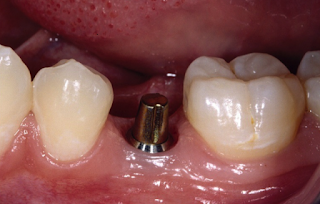Tooth Bonding
When a person has a crack or broken tooth, he/she needs
the bonding treatment to repair it. The tooth bonding fixes the small to big
issues of the teeth like chipped tooth, crooked tooth, or a short tooth that
makes you uncomfortable. Usually, the teeth bonding treatment repairs the minor
damages of the teeth that make the line uneven. This is a simple, inexpensive,
and cozy treatment. It restores the shape of the broken tooth and makes the
weak teeth strong.
Moreover, dental bonding is an affordable and quick
treatment. It does not take too much time. Right after the procedure, you will
get a newly repaired tooth. Another best part of this treatment is that the
results can last for a longer period. The bonding solution does wear away
quickly. Moreover, if you look after oral health and hygiene, it will show you
some unexpected results. The tooth bonding procedure takes only thirty minutes
or an hour. Usually, it requires only 30 mins, and you get the desired results,
right after the application of the bonding formula. It gives instant results
and provides you an even smile.
Before
Treatment
As I said earlier, not every tooth needs the bonding
procedure. If you have a minor crack or any other issues, then the dentist will
suggest tooth bonding. It cannot restore the entire tooth or a molar. If a
person has an absent tooth or broken enamel, then you might need veneers or
crown treatment. Moreover, if you have chipped front teeth, your entire tooth
is broken, then also the dentist will suggest another procedure. When you go
through the tooth bonding, you cannot put pressure on the front teeth. You need
to eat and chew your meal with a low force to sustain the bonding. It usually appears
on the front teeth; thus, you need to grind the morsel from molars. Try to make
less use of front teeth after getting the bonding treatment. Moreover, when
your dentist diagnosis the problem in your teeth, he/she suggests the best
procedure of repair for teeth. Sometimes, the tooth bonding is not for you, you
need veneers or a crown.
The
Procedure of Tooth Bonding
Dentists cement a resin solution on the broken or damaged
tooth. Then they fill the cracks and gaps and harden and molded the tooth. The
cementing formula has your natural teeth’s color. Therefore, you cannot
distinguish the artificial resin from your organic teeth. To give your tooth
the original shape, dentists use different tools (Dremel). Moreover, they also
use their hands (with gloves) to fix the cement. It takes a few minutes to
adopt the position and get fixed to your teeth.
The procedure does not give you pain; however, you feel a
sensation in your mouth. Due to the Dremel machine, you realize a slight
movement of discomfort. Moreover, until they adhere to the resin, you will feel
roughness on the teeth. The tooth bonding treatment usually does not need
numbness. However, if you have severe damage and the procedure will take a
longer time than usual, then a dentist can give you an injection to numb the
area.
To fix the resin, dentists use a special light on the
tooth. It does not give you any sensitivity or pain. This makes the formula
hard, fix, and gives you a smooth final touch.
Care
After the Tooth Bonding
Tooth bonding is a strong procedure for your damaged and
cracked teeth; however, if you do not treat them with care, they might get
broken. Especially, the front teeth are fragile, and usually, they have the
resin formula; thus, you should exert low pressure on them while eating. Some
people have a bad habit of chewing their lips through the front teeth. This
also can break the bonding solution. Moreover, avoid foods that can make your
teeth weak.








